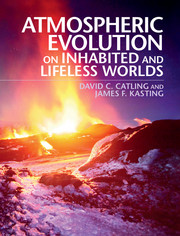Refine listing
Actions for selected content:
17002 results
Preface
-
- Book:
- Gravitational Lensing
- Published online:
- 28 May 2018
- Print publication:
- 08 June 2017, pp xi-xii
-
- Chapter
- Export citation
2 - Deflection of Light
-
- Book:
- Gravitational Lensing
- Published online:
- 28 May 2018
- Print publication:
- 08 June 2017, pp 17-37
-
- Chapter
- Export citation
6 - Metallization of Fluid Hydrogen at 140 GPa
-
- Book:
- Ultracondensed Matter by Dynamic Compression
- Published online:
- 04 July 2017
- Print publication:
- 15 May 2017, pp 84-105
-
- Chapter
- Export citation
3 - Generation of Dynamic Pressures
-
- Book:
- Ultracondensed Matter by Dynamic Compression
- Published online:
- 04 July 2017
- Print publication:
- 15 May 2017, pp 53-62
-
- Chapter
- Export citation
8 - Shock-Induced Opacity in Transparent Crystals
-
- Book:
- Ultracondensed Matter by Dynamic Compression
- Published online:
- 04 July 2017
- Print publication:
- 15 May 2017, pp 121-124
-
- Chapter
- Export citation
7 - Unusual Magnetic Fields of Uranus and Neptune: Metallic Fluid H
-
- Book:
- Ultracondensed Matter by Dynamic Compression
- Published online:
- 04 July 2017
- Print publication:
- 15 May 2017, pp 106-120
-
- Chapter
- Export citation
Acknowledgments
-
- Book:
- Ultracondensed Matter by Dynamic Compression
- Published online:
- 04 July 2017
- Print publication:
- 15 May 2017, pp ix-x
-
- Chapter
- Export citation
1 - Introduction
-
- Book:
- Ultracondensed Matter by Dynamic Compression
- Published online:
- 04 July 2017
- Print publication:
- 15 May 2017, pp 1-16
-
- Chapter
- Export citation
Copyright page
-
- Book:
- Ultracondensed Matter by Dynamic Compression
- Published online:
- 04 July 2017
- Print publication:
- 15 May 2017, pp iv-iv
-
- Chapter
- Export citation
Preface
-
- Book:
- Ultracondensed Matter by Dynamic Compression
- Published online:
- 04 July 2017
- Print publication:
- 15 May 2017, pp vii-viii
-
- Chapter
- Export citation
References
-
- Book:
- Ultracondensed Matter by Dynamic Compression
- Published online:
- 04 July 2017
- Print publication:
- 15 May 2017, pp 139-156
-
- Chapter
- Export citation
4 - Brief History of High-Pressure Research: 1643 to 1968
-
- Book:
- Ultracondensed Matter by Dynamic Compression
- Published online:
- 04 July 2017
- Print publication:
- 15 May 2017, pp 63-78
-
- Chapter
- Export citation
Index
-
- Book:
- Ultracondensed Matter by Dynamic Compression
- Published online:
- 04 July 2017
- Print publication:
- 15 May 2017, pp 157-158
-
- Chapter
- Export citation
2 - Basics of Dynamic Compression
-
- Book:
- Ultracondensed Matter by Dynamic Compression
- Published online:
- 04 July 2017
- Print publication:
- 15 May 2017, pp 17-52
-
- Chapter
- Export citation
5 - Rare Gas Fluids
-
- Book:
- Ultracondensed Matter by Dynamic Compression
- Published online:
- 04 July 2017
- Print publication:
- 15 May 2017, pp 79-83
-
- Chapter
- Export citation
9 - Metastable Solid Metallic Hydrogen (MSMH)
-
- Book:
- Ultracondensed Matter by Dynamic Compression
- Published online:
- 04 July 2017
- Print publication:
- 15 May 2017, pp 125-129
-
- Chapter
- Export citation
Contents
-
- Book:
- Ultracondensed Matter by Dynamic Compression
- Published online:
- 04 July 2017
- Print publication:
- 15 May 2017, pp v-vi
-
- Chapter
- Export citation
10 - Warm Dense Matter at Shock Pressures up to 20 TPa (200 Mbar)
-
- Book:
- Ultracondensed Matter by Dynamic Compression
- Published online:
- 04 July 2017
- Print publication:
- 15 May 2017, pp 130-138
-
- Chapter
- Export citation

Bayesian Models for Astrophysical Data
- Using R, JAGS, Python, and Stan
-
- Published online:
- 11 May 2017
- Print publication:
- 27 April 2017

Atmospheric Evolution on Inhabited and Lifeless Worlds
-
- Published online:
- 04 May 2017
- Print publication:
- 13 April 2017
